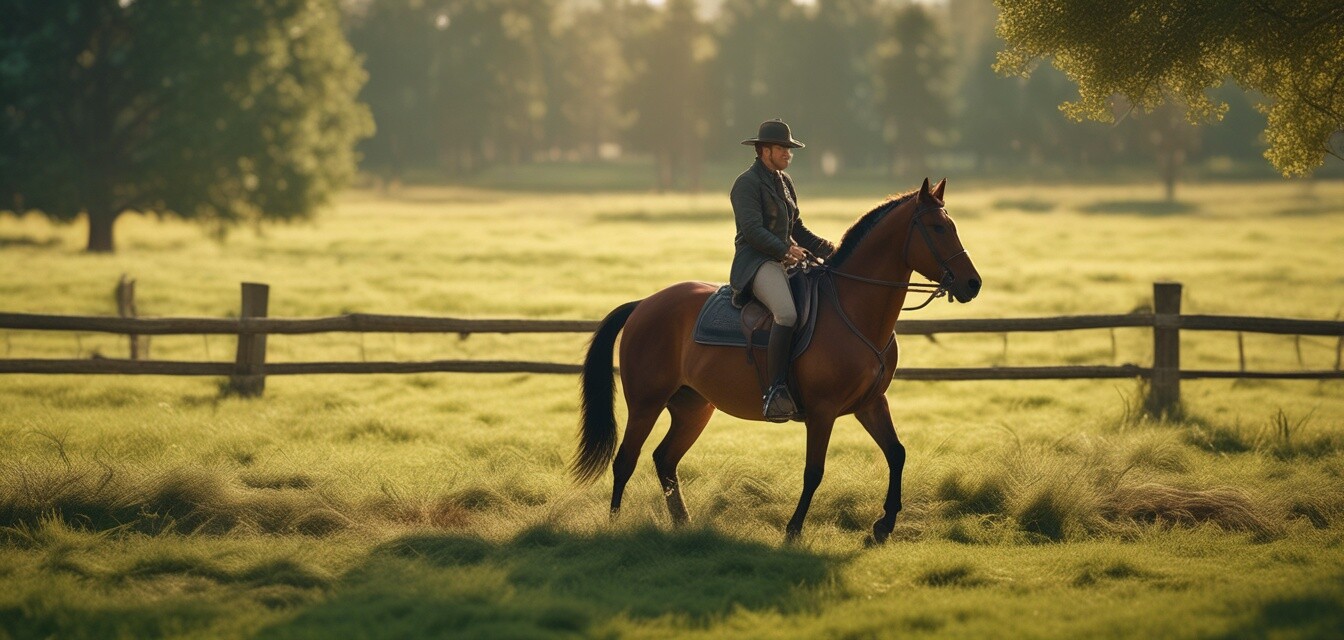
How to properly fit a saddle to your horse
Fitting a saddle correctly is crucial for your horse's comfort, performance, and safety. An ill-fitting saddle can cause pain and lead to behavioral issues, so understanding how to identify the right fit is essential for any rider. In this guide, we will discuss key points to consider when fitting a saddle and signs of poor fit to watch for.
Key Takeaways
- Assess your horse's back shape and size.
- Check saddle placement and balance.
- Look for signs of discomfort or pain in your horse.
- Regularly re-evaluate saddle fit as your horse changes.
Understanding saddle fit
Fitting a saddle is more than just selecting the right size. It’s about understanding how a saddle interacts with your horse's conformation. Here are a few key factors to consider:
1. Saddle Types
| Saddle Type | Best Suited For |
|---|---|
| All-Purpose Saddles | General riding, suitable for various disciplines. |
| Jumping Saddles | Jumping disciplines with a forward flap design. |
| Dressage Saddles | Dressage with a deeper seat for better balance. |
| Western Saddles | Rodeo and trail riding with a unique design. |
2. Assessing your horse’s back shape
Before choosing a saddle, evaluate your horse's back. Consider the following:
- Wither height: A taller wither needs a different saddle type.
- Back length: Measure from withers to the point of hip.
- Back width: This influences saddle tree size.
3. Proper saddle placement
Once you have selected a saddle type, it's important to place it correctly:
- Position the saddle just behind the withers.
- Ensure it sits level on the horse's back without tipping forward.
- Leave sufficient clearance above the withers and spine.
Signs of a poor fit
Even after following fitting guidelines, keep an eye out for signs of poor saddle fit. Here are some common indicators:
- Uneven sweat marks after riding.
- White hairs or rubs on the back.
- Behavioral changes such as bucking, refusing to work, or general restlessness.
- Difficulty in saddle placement or tightness when girthing.
Tips for maintaining saddle fit
Regular assessment
It’s critical to routinely assess your saddle fit, especially after:
- Your horse has undergone physical changes (weight loss/gain).
- The changing seasons affect body condition.
- New exercises or training because muscles can develop differently.
Pros
- Enhances overall comfort for your horse.
- Improves performance and energy efficiency.
- Reduces the risk of injuries related to saddle fit.
Cons
- Requires proper knowledge and skills to assess correctly.
- Initial costs can be significant for quality saddles.
- Frequent adjustments may be necessary.
Additional resources
For more insights on horse riding gear, check out some of our other articles:
- Buying guides for equestrian gear
- Horse care products that enhance health
- Essential equestrian gear for every rider
Conclusion
Fitting a saddle correctly to your horse is a fundamental part of being a responsible horse owner. By understanding your horse's needs and regularly checking your saddle's fit, you can ensure more comfortable rides and stronger performance. Always keep learning about saddle fitting and consider professional advice if needed, to maintain the best experience for you and your horse!
